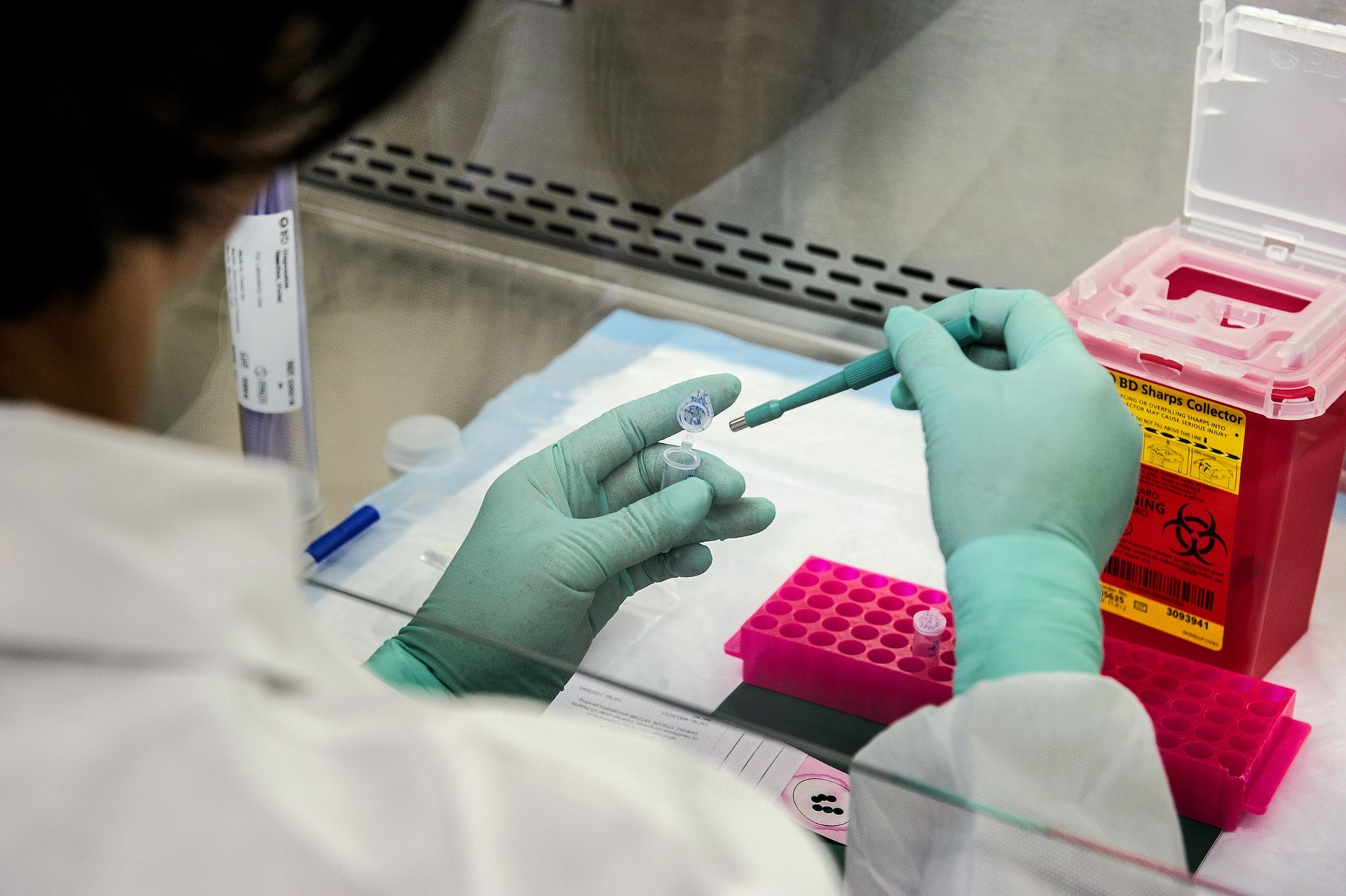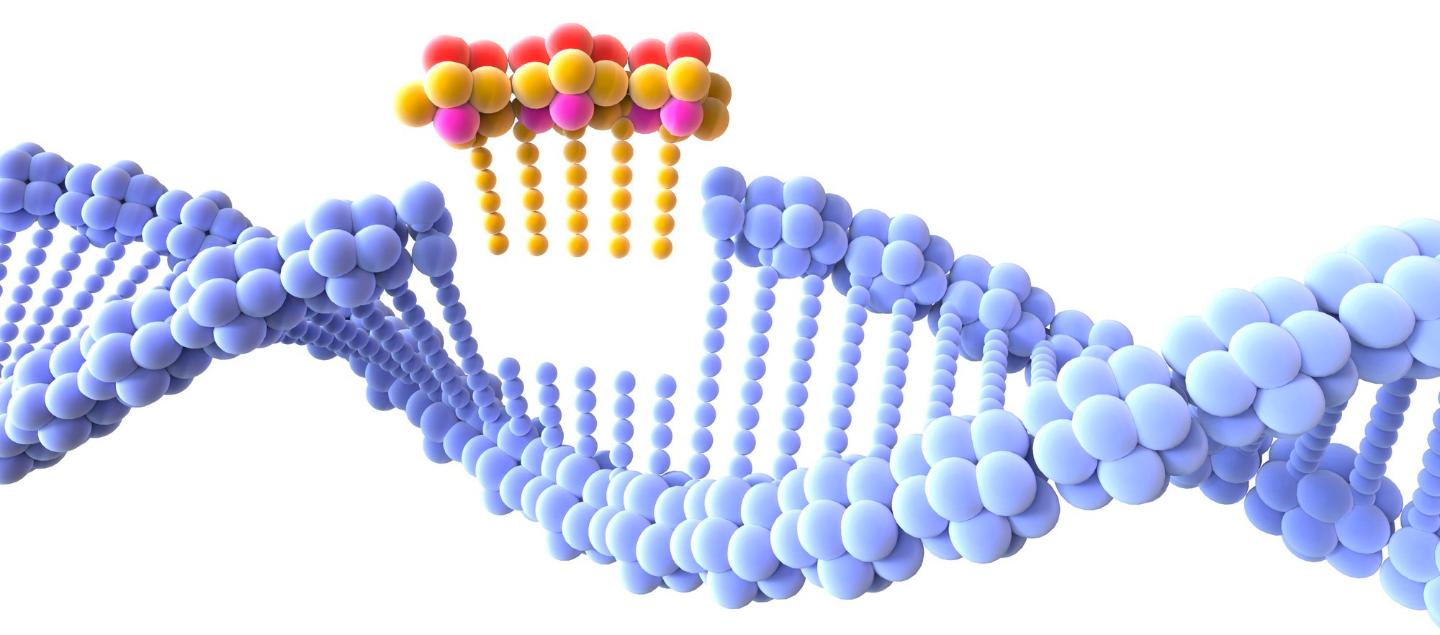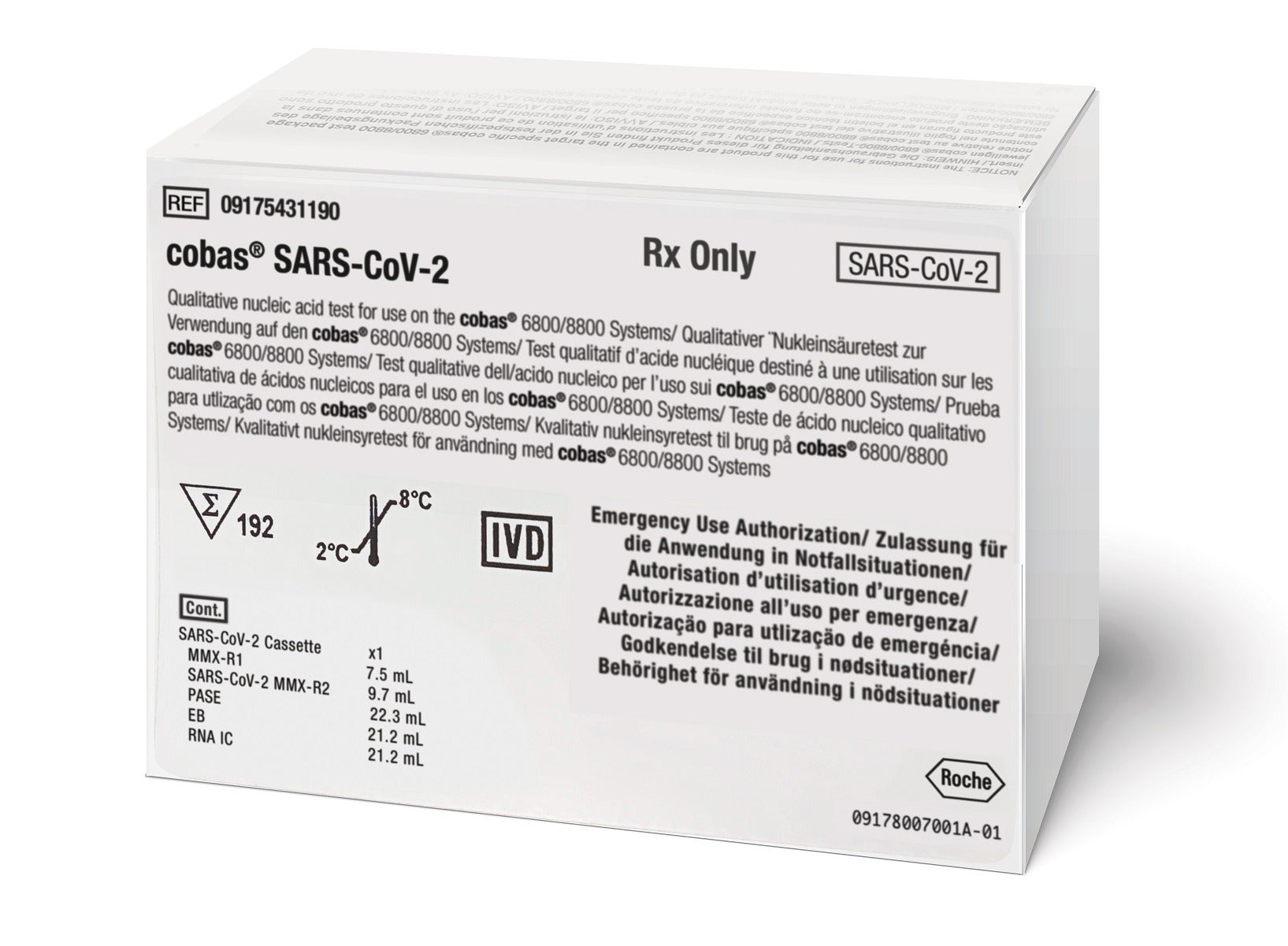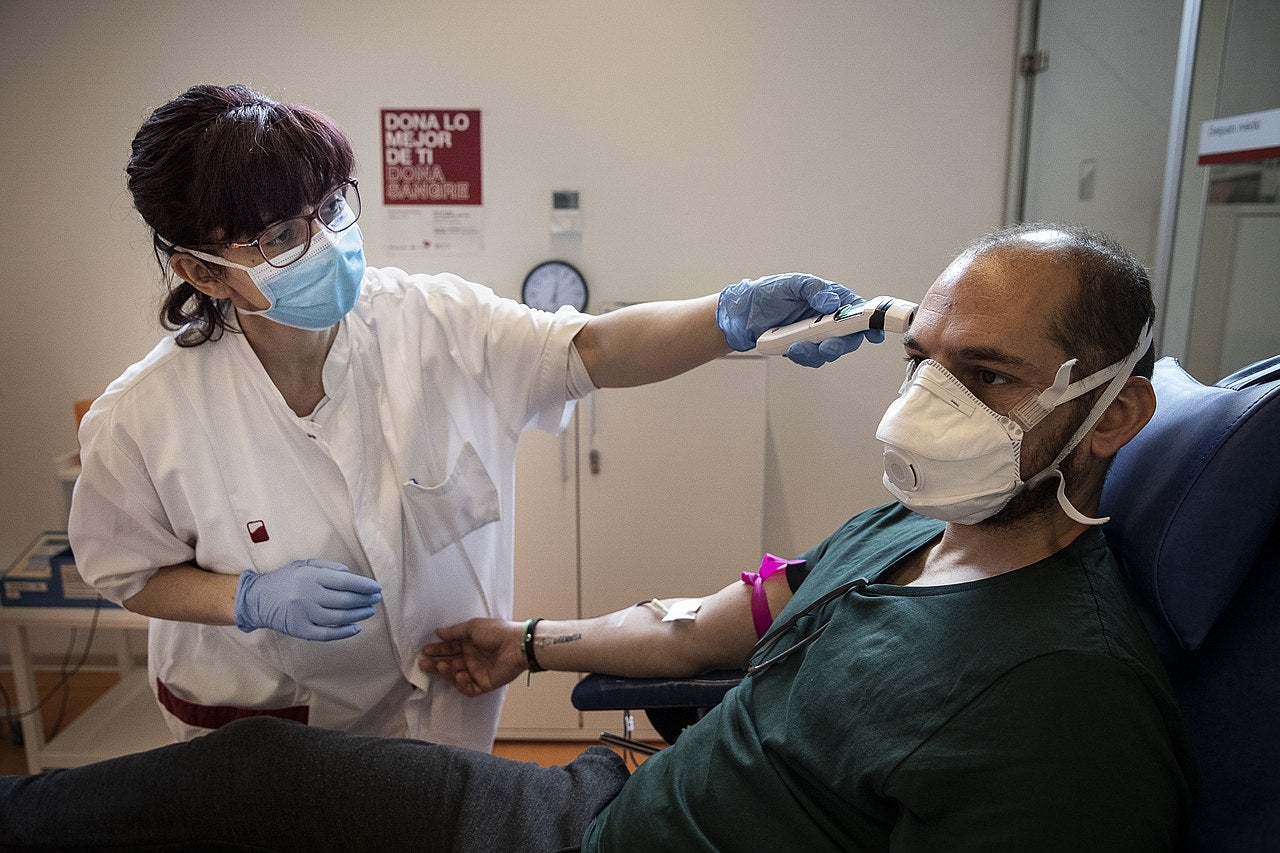
Along with other subsectors in the healthcare industry, diagnostics have gained a great deal of attention throughout the Covid-19 crisis. Efforts to plug supply chain gaps and meet demands surrounding testing kits have given rise to novel methods for detecting the SARS-CoV-2 virus, one of which is CRISPR — an emerging technology that had primarily been looked upon as a tool for gene editing before the pandemic. Jamie Bell speaks to GlobalData medical analyst Brian Hicks and Sherlock Biosciences’ chief technology officer, Will Blake, about why this highly programmable, rapid diagnostic tool could disrupt Covid-19 testing markets — and potentially be used to detect numerous other diseases.
When the novel coronavirus pandemic first broke out in the Chinese city of Wuhan and began to spread across the world in early-2020, the reaction from health officials was remarkably swift.
On 12 January — one day after the first known Covid-19-related death had been confirmed — researchers in China identified the SARS-CoV-2 virus’ genetic sequence, and shared it with the rest of the world.
Despite this rapid turnaround, widespread testing for the virus took a comparatively long time to get off the ground in many places — and although the US and UK may be leading the way now due to the sheer volume of domestic tests they conduct daily, both struggled to keep pace with other developed countries initially.
According to statistics from Our World in Data, by 8 March South Korea had performed a total of 188,500 coronavirus tests and Germany had performed 124,700, while the US had conducted just 5,000.
The nearest available data for the UK comes from 12 March — at which point about 29,700 tests had been performed in the country.
The nucleic acid-based PCR (polymerase chain reaction) tests that have been deployed across the globe during the pandemic have undoubtedly played a critical role in understanding and controlling the spread of Covid-19.
However, failure to keep up with demands for tests early on — and widely acknowledged shortages of the chemical reagents used in these PCR-based testing kits — have highlighted thinking that alternative technologies and methods for diagnosing the virus may well be beneficial.
One of the most notable examples of these alternatives is CRISPR (clustered regularly interspaced short palindromic repeats) technology — a biotechnological tool that had primarily been researched and used in the context of genetic engineering, or ‘gene editing’, until recently.
Its potential in the diagnostic sphere has seemingly been unlocked during the coronavirus outbreak, with two American biotech firms, Sherlock Biosciences and Mammoth Biosciences, gaining an emergency use authorisation (EUA) from the US Food and Drug Administration (FDA) for their respective CRISPR-based testing kits in 2020.
These regulatory approvals have sparked considerable interest in the industry, and a report published on the Medical Device Network website in July is one of several articles suggesting that CRISPR has the potential to disrupt the Covid-19 testing market.
Brian Hicks, the medical analyst at analytics firm GlobalData who wrote that article, believes the speed and adaptability of CRISPR compared to PCR-based alternatives means it is in a strong position moving forward.
“There’s no doubt that, as of right now, PCR is still the dominant player in the IVD market for Covid-19,” says Hicks.
“CRISPR is still a relatively new player, but it definitely has the potential to dominate in the future – not just for coronavirus but in diagnostics generally. It’s just a matter of when that will be.
“And that could be as short as five or 10 years’ time, or it could take longer, and be closer to 20 or 30 years — we really don’t know.”
What is CRISPR technology?
The traditional use of CRISPR is as a tool for editing genomes by first identifying DNA sequences inside a cell, and then precisely altering them.
An enzyme called Cas9 — which forms the full name for the technology, CRISPR-Cas9 – makes this latter function possible by acting as a pair of molecular scissors, and snipping specific strands of DNA to remove genetic mutations.
In 2013, the first reports of CRISPR being used to edit human cells in an experimental setting were published in American academic journal Science by researchers George Church of Harvard University’s Wyss Institute, and Feng Zhang of the Massachusetts Institute of Technology (MIT).
While it is still a relatively new technology, CRISPR has several potential uses as a tool for programmable genome editing.

These applications include correcting genetic defects, treating and preventing the spread of certain diseases, and even improving the quality of crops through genetic modification.
However, alongside this potential in therapeutics, there has also been extensive research more recently into whether CRISPR could be used in diagnostics.
If the Cas9 protein is removed from CRISPR, the technology can be programmed to simply detect certain genomes, rather than editing them.
This allows diseases with a known genetic sequence — such as the SARS-CoV-2 virus — to be identified and diagnosed in human samples.
Sherlock and Mammoth’s Covid-19 tests
Even before the coronavirus pandemic, researchers and companies had already made considerable progress on this front, and the possible good CRISPR could do in the diagnostics space was somewhat established.
But when the crisis began to take hold across the world, two US start-ups acted quickly to take the initiative and put this theory into practice.
On 6 May, Massachusetts-based biotech firm Sherlock Biosciences became the first company to receive FDA approval of any kind for a CRISPR-based diagnostic tool, when its Covid-19 testing kit was granted emergency use authorisation.
At the time, Sherlock’s co-founder, CEO and president Rahul Dhanda said the company had “made history” with the first-ever clinical application of CRISPR technology — a feat achieved just 13 months after the start-up’s inception in April 2019.
Additionally, Will Blake, Sherlock’s chief technology officer, says: “The emergency use authorisation has enabled technologies like our own to drive into diagnostic testing, as I think the bar is a little bit lower than it would be with a 510(k) FDA approval.
“But the fact we’ve been able to achieve this authorisation rapidly, as a very young company, is a testament to both the technology — and the ease with which it can be leveraged — but also our team here at Sherlock.

“It’s a tremendous team with deep experience in the diagnostic space, and that has enabled us to move relatively quickly to bring this young technology from the academic labs where it was born to clinics that are now using it to test for Covid-19.”
Sherlock Biosciences also partnered with fellow American firm Binx Health in July, and is currently working to develop the world’s first point-of-care CRISPR-based coronavirus test using its diagnostic platform, binx io.
California-headquartered start-up Mammoth Biosciences soon followed Sherlock in gaining an EUA for its own SARS-CoV-2 RNA DETECTR Assay test, which it developed alongside the University of San Francisco in early-July.
Mammoth was co-founded in 2017 by Dr Jennifer Doudna — a molecular biologist who is widely regarded as one of the original inventors of CRISPR in gene editing — and is now working with pharma giant GlaxoSmithKline’s consumer products division to develop a faster point-of-care coronavirus test.
As of September 2020, more than 170 diagnostic tools for SARS-CoV-2 have received an EUA — many of which are PCR-based assay tests — but Sherlock and Mammoth remain the only two companies to gain FDA approval for a CRISPR-based testing device.
Key benefits of CRISPR in SARS-CoV-2 testing
Programmability
Two key elements effectively combine to determine how accurately a given Covid-19 test can diagnose the virus.
These components are sensitivity, which is the proportion of positive test results the test has been shown to correctly identify, and specificity, which is the proportion of negative test results it has been shown to correctly identify.
According to Blake, Sherlock’s CRISPR-based test has demonstrated 100% sensitivity and 100% specificity. Both of these figures are “comparable” to many PCR-based alternatives — but the latter is of particular interest here.
The reason why Sherlock’s test and, in theory, any potential CRISPR-based test, is able to boast such high specificity is because the technology is also highly programmable.
“When people say CRISPR is highly programmable, it means that researchers can design a strand of RNA based on the genetic sequence of the disease that they’re interested in finding,” says Hicks.
“I think that’s the biggest advantage of CRISPR in comparison to PCRs and other types of tests — you can design different sequences for different targets, and that could be coronavirus, but in future we can use this technology for literally any genomic-based disease.”
CRISPR’s programmability can also help to tackle one of the biggest problems with a rapidly spreading infectious disease such as Covid-19 — which is that single nucleotides within its DNA can change, altering the virus’ genetic sequence.
This is commonly referred to as a virus “mutating”, and it leads to there being multiple strains of the same disease, making it harder to detect and diagnose in patients.
However, the high specificity of CRISPR allows it to detect these single nucleotide changes. Specific regions of a disease’s genetic sequence that are known to have mutated can therefore be set as the guide RNA for a CRISPR-based test, and it can look for that specific strain of the virus.
“We started with just a few sequences of the SARS-CoV-2 genome when it was first identified,” says Blake.
“But, it’s a virus that changes and mutates relatively quickly, and we’ve focused our efforts on developing a highly specific test, taking into account the much larger pool of sequences that became available as more and more was known about the virus.
“As our test continues to be used, we’ve seen continued high specificity and high sensitivity in terms of results, and we’re excited about what that means in terms of bringing things back to pre-pandemic times.”
Speed
Another key benefit CRISPR holds within diagnostics is the speed at which it generates test results compared to many PCR-based alternatives.
“Our SARS-CoV-2 test runs in about an hour, which is typically faster than most RT-PCR methods that dominate this type of testing,” says Blake.
“It provides a higher throughput, meaning we can run more tests in roughly the same amount of time.
“I think it’s critically important for there to be more testing, more accessible testing and faster turnaround on test results — and I think all of that is going to be required to start moving things back to some degree of normalcy.”
Sherlock’s CRISPR-based test does compare favourably to some of the first RT-PCR testing kits that gained an EUA back in March.

For example, Swiss healthcare giant Roche claimed its cobas SARS-CoV-2 diagnostic test could produce results in about three-and-a-half hours, while US medtech firm Hologic said its Panther Fusion SARS-CoV-2 Assay was able to generate results “within three hours”.
This time saving is made possible by the mechanism of action used by CRISPR technology — as Hicks describes, the system simply needs to “land” on the right genetic sequence for the subsequent reactions to take place, and this will produce a visual signal in a way that’s not dissimilar to a litmus test.
And, while cutting that timeframe down from two or three hours to just one hour — or even slightly less — may not seem that significant, it’s situations just like the current pandemic where it can prove critical.
“I think if you’re looking at it on an individual level, it doesn’t seem like a much shorter time,” says Hicks.
“But, the reason why CRISPR has the potential to be a disruptor in the market is because, if you’re performing tests at a massive scale, every little bit of time saving counts.”
Reagents and equipment used
UK cabinet office minister Michael Gove conceded in March that delays in getting coronavirus testing off the ground were due to availability issues surrounding the chemical reagents used in diagnostic test kits.
A similar situation also unfolded in the US, with a survey from the Association of Molecular Pathology in May finding that more than 70% of clinical laboratories had suffered delays in Covid-19 testing programmes due to supply chain disruptions, and shortages of critical reagents.
The logistics involved in CRISPR-based testing, however, may have the potential to circumvent these issues as the pandemic continues.
As Blake says, Sherlock’s test uses a different set of reagents that are “more readily available” because the global demand for them is not currently as high.
This contributes even further to CRISPR-based Covid-19 tests having the potential to achieve a higher throughput of results than PCRs — as fewer shortages mean there are fewer delays, and a higher volume of tests can ultimately be conducted in a given timeframe.
Another advantage CRISPR has in diagnostics more generally, according to Blake, is the fact that it is somewhat “agnostic” to the chosen method of DNA amplification deployed when targeting the genome of a disease.
In terms of real-world applications, this essentially makes CRISPR “much more accessible” than other technologies used in testing kits.
Blake says: “We use isothermal amplification — our test effectively involves a heat block that can maintain a temperature of 61 degrees celsius, and a standard fluorescence plate for the readout of the results.
“So, there’s no requirement for specialised equipment. The equipment needed for the test is more readily available, and typically part of most CLIA-certified sets of lab equipment.”
Beyond the pandemic
There’s little doubt CRISPR is still in its infancy as a diagnostic technology, and this makes it difficult to judge what its real-world uses and lasting impact beyond the context of the current crisis may be.
However, Blake says Sherlock plans to explore these applications in the future, and believes the very nature of CRISPR – and, once again, the fact that it’s highly programmable – means it stands a good chance of detecting a wealth of other diseases beyond just Covid-19.
“Every living thing on our planet has nucleic acid, and what we’re developing is a means of detecting nucleic acid with very high specificity and sensitivity — whether that’s RNA or DNA, in a virus or a bacterium,” he says.
“Because you can essentially point these nucleic acid detection systems towards any sequence by changing a strand of guide RNA, we see CRISPR as a technology that will disrupt molecular diagnostics and enable a whole new class of nucleic acid detection that harnesses that programmability.
“We see these advantages as enabling a broad range of testing — certainly within infectious diseases, but outside of that space as well.
“As a clinical diagnostic test it’s still a very early technology, but we do see it as being the next generation of molecular diagnostics, and we expect to see fairly broad adoption, given its advantages.”

While the range of diseases CRISPR could, in theory, be used to detect further down the line may be very wide, Hicks believes that there are some limitations to its applications.
“CRISPR is, by its very nature, genomic,” he says. “And there are a lot of diseases that are diagnosed based on non-genetic tests — by looking at blood samples, antibody counts, or other biomarkers.
“So, CRISPR will not diagnose every single disease out there, as it will be specific to genetic-based ones. I don’t think that’s going to change, because it’s just so fundamental to the concept of the technology.”
CRISPR has already proved to be an effective tool for diagnosing diseases with a known genetic sequence — and SARS-CoV-2 is a perfect example of this — but Hicks says other methods like whole-genome sequencing (WGS), which involve examining an entire genome, are still preferable for detecting conditions that have not yet been identified.
“And this isn’t just a scientific issue — it’s also about where Sherlock and Mammoth want to go from here,” he continues.
“My guess is that they are going to be the market leaders, because they’ve come out ahead of everyone else.”
Right now, both of these pioneering start-ups are still primarily focused on the fight against Covid-19.
Things are moving “very quickly” in Sherlock’s attempts to develop a point-of-care CRISPR-based testing kit with Binx Health, according to Blake, while Mammoth is attempting to address testing shortages in the US by scaling up its SARS-CoV-2 test in commercial labs across the country.
When the dust eventually settles, however, and many of the other prominent diseases facing the world can be focused on once more, it seems inevitable that the potential CRISPR holds in diagnostics will be of interest — not only to the two fledgling biotech firms that introduced it to this space, but countless other companies within the industry as well.





